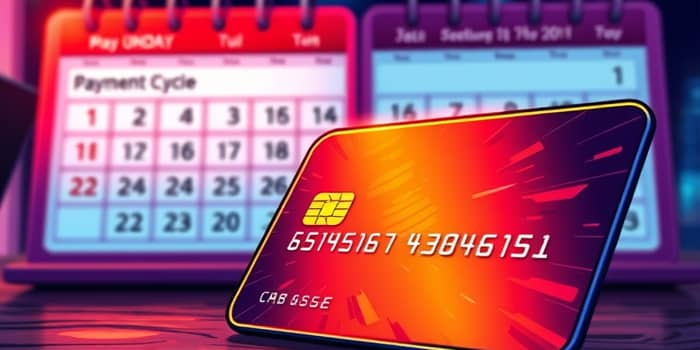
Every time you swipe, tap, or insert your credit card, you unlock a negotiable agreement with your issuer: the grace period. Harnessing this powerful feature allows you to fund everyday expenses and planned purchases without paying interest—provided you play by the rules. Understanding the nuances of your card’s interest-free window can save you hundreds or even thousands of dollars annually, helping you build a more secure financial foundation. This comprehensive guide will take you step by step through the mechanics, strategies, and common pitfalls so that you can make your grace period work for you.
Whether you’re a recent graduate navigating your first credit card or a seasoned consumer optimizing multiple accounts, knowing how to manage the grace period helps you avoid costly surprises. We will examine definitions, mechanics, issuer variations, recovery tactics, and advanced tips. By the end, you’ll be armed with actionable insights to improve cash flow, protect your credit score, and leverage promotional offers effectively. Let’s dive in.
A grace period refers to the lenient time frame between your statement closing date and the payment due date during which new purchases do not accrue interest. It exists to reward disciplined spending, giving you breathing room to repay charges interest-free. If you settle the entire statement balance by the due date, you escape finance charges on purchases made during that cycle. Think of it as an interest-free buffer zone that can save you money—but only if you pay the full balance on time.
Importantly, this benefit typically applies exclusively to purchases. Cash advances and balance transfers often begin accruing interest immediately, bypassing the grace period. Promotional 0% APR offers grant a separate temporary interest-free rate for purchases or transfers, but deferred interest deals can trigger retroactive fees if you don’t pay the full balance by promotion end. Always confirm whether a special offer includes or excludes the standard grace period to avoid unwelcome charges.
Your billing cycle generally spans 28 to 31 days, concluding on your statement closing date. After this date, your issuer tallies all activity and issues a statement with a summary balance and payment due date, which must be at least 21 days later by law in the U.S. During this window of time between billing and payments, you can remit the full statement balance without incurring interest on new purchases. Purchases made at the start of the cycle receive the maximum interest-free days, while those made just before closing enjoy a shorter grace period. Timing purchases strategically can therefore maximize your interest-free horizon.
Being aware of these dates empowers you to plan spending and payments. You might choose to make large, essential purchases at the beginning of each cycle, giving yourself more time to fund the repayment without bearing finance charges.
Most U.S. credit cards offer a grace period of 21 to 25 days, though some premium cards extend this range up to 55 days depending on promotional terms. For cards issued outside the U.S., especially in markets like Australia or Europe, issuers may advertise up to 44 or 55 days interest-free. However, the actual duration depends on your purchase posting date relative to the billing cycle. It’s vital to recognize that this quoted maximum is not a guarantee for every transaction; each charge’s interest-free interval can vary by several weeks.
Transactions that do not enjoy this grace period include cash advances, balance transfers, and many promotional or deferred interest offers. These often carry higher APRs and accrue interest from day one. If you move funds using a balance transfer or withdraw cash, expect interest charges to begin immediately, potentially at a higher daily rate. Reading the fine print is crucial, as some offers may also exclude certain merchant categories or apply fees that erode the benefit of an interest-free window.
To preserve your grace period, you must pay your entire statement balance by the due date. Even missing one payment or paying only the minimum can strip you of the grace period, causing interest to accrue on the carried-over balance from the transaction date at your full APR. This makes your finances more expensive overnight.
Different issuers have varying requirements for restoring the grace period once lost. Some reinstatement policies kick in after a single cycle of full payment; others may require two or more consecutive clean statement payments. A few issuers might impose additional conditions, such as no late payments in a set timeframe. To navigate these rules, keep track of your payment history and consult customer service if you’re unclear. Early communication can often prevent penalty APRs or other punitive measures from taking effect.
Use the table above to compare typical grace period lengths and conditions across different issuers. Note that while most banks cluster around a 21- to 25-day span, premium or specialized cards can stretch to 51 or 55 days, often as part of rewards or travel packages. When selecting a new card, weigh the advertised maximum against your spending patterns: if you make large purchases early in the cycle, longer windows can translate into significant savings on interest.
Consider this scenario: your billing cycle runs from April 1 to April 30, with a payment due date of May 25. A purchase on April 1 enjoys 54 interest-free days, while a purchase on April 30 only receives 25 days. If you charged $2,000 on April 1 and paid it by May 25, you’d pay zero interest. Conversely, waiting until April 30 to make a $2,000 purchase and missing the May 25 due date by one day would result in immediate interest on the balance, potentially adding tens or hundreds of dollars in finance charges depending on your APR. Such timing nuances illustrate why understanding the grace period can substantially affect your bottom line.
Maximizing your grace period requires both strategic spending and disciplined payment habits. First, plan high-value purchases for the first week of your billing cycle. Next, set up automatic payments for at least the full statement balance to eliminate the risk of late or insufficient payments. Third, track statement closing dates and due dates on a shared calendar or financial app, ensuring you never miss a deadline. Lastly, consider rotating purchases among multiple cards to exploit each card’s grace period optimally while managing rewards and bonuses.
Incorporating these tactics into your routine can dramatically reduce or eliminate finance charges, freeing resources for saving or investing. By understanding and respecting each issuer’s terms, you transform the grace period from a simple billing feature into a powerful financial lever.
Even savvy consumers can slip up and lose their grace period. Avoid paying only the minimum due, as this forfeits interest-free benefits and prolongs debt repayment. Don’t assume that promotional or deferred interest offers include the standard grace period—failure to clear these balances by promotional end often triggers retroactive interest. Finally, watch out for due dates that fall on weekends or holidays; payments processed early may reflect as on-time, but delays can incur late fees and penalty APRs.
No two credit cards are identical in their grace period provisions. Annual percentage rates, fees, billing cycle structures, and issuer policies can all influence how your grace period operates. Review your cardholder agreement or issuer’s online disclosures to confirm the exact number of days allotted, the types of transactions covered, and the process for regaining lost privileges. If any detail feels unclear or if you’re considering a card with a hefty annual fee, contact customer support for clarification—understanding the fine print can prevent unwelcome surprises on your bill.
A credit card grace period is more than a convenience—it’s a financially strategic feature that, when used correctly, can save you significant money by eliminating interest on everyday and large purchases. By mastering the definitions, timing mechanics, issuer variations, and recovery processes, you not only maintain a strong credit profile but also optimize cash flow for other financial goals. The key lies in disciplined payment behavior and strategic timing of your transactions. Armed with the tips and insights provided here, you can transform your grace period into a reliable partner in building sustainable financial health.
Start tracking your billing cycles, set up automated payments, and time your purchases wisely. Embrace the power of the grace period today, and enjoy the freedom of interest-free spending without compromise.
References













